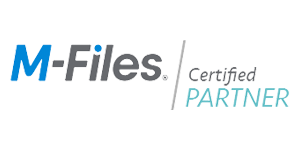Create a Technology Roadmap
Ensure Stakeholder Alignment and Build a Technology Roadmap
See How to Create a Technology Roadmap for Process Automation!
Our Technology Roadmap drives agreement among stakeholders and prioritizes features and integrations in your software investment and implementation.
Many organizations start down the path of investing in new software to solve an immediate problem with the expectation that they are going to replace their entire system at once. A year or so later, they realize they are still a long way from deploying any working software because they didn't start with the creation of a technology roadmap.
Agree on Business Objectives
Understand Current State
Prioritize Solution Options
Adopt an Agile Approach
What to expect when building an agile Technology Roadmap with ArgonDigital.
A Technology Roadmap Serves as a Strategic Blueprint
During our agile Technology Roadmap engagement, we’ll help you identify and analyze your current processes to understand the specific problems you’re aiming to solve. We’ll work with stakeholders separately ahead of scheduled workshops to identify areas of disagreement. Then, we’ll drive collaboration across your teams to identify and discuss areas of misalignment to clearly define the business objectives you’re aiming to achieve and prioritize the steps necessary to achieve them. As independent technology experts that specialize in defining requirements for a variety of F1000 businesses and government organizations, we’re able to act as a natural mediator, eliminating the need for anyone on your team to be the ‘bad guy’. This approach enables everyone involved to collaborate to prioritize the most important features that will deliver the greatest value. Reach out, and together we can dig into whether you need to deploy an entire solution at once or if we can prioritize delivering increments of software on a roadmap to ensure your software is used sooner than later.Building a Technology Roadmap
A Technology Roadmap Defines the Value to be Realized and Problems to be Solved
We work with project sponsors and stakeholders to define project success in terms of tangible business value for use by the Software Selection team to define Features and Functionality necessary to solve your targeted problems.
Objectives
Collaborate
Technology
Visualize
Plan for Future State Processes and Ecosystem
We work with all business and IT stakeholders to model and understand the future state processes, data, and systems so that we can understand the environment that your new software will replace or need to coexist with.
Features
Integrations
Priorities
Next, we identify which updates will deliver the highest value to build first.
Select
Then we build a formal roadmap based on the priorities of what specifically to do, and when.
Setup to Measure Business Value
Plan to Measure
Small Steps
Re-Measure
Maintain & Improve
We love helping great companies map out their future successes.
Advanced software solutions we love to work with.
We research, we experiment, and we only partner with best-in-class technologies, like…
See how we've helped other organizations build a technology roadmap to plan their investment in the right software.

Case Study: An Agile Approach to Migrating Data for Jack in the Box
The data transformation project at Jack in the Box, to migrate their entire data architecture to AWS Redshift and Tableau, was accomplished using Agile iterations that stemmed from strategic alignment.

Business Analysis and Successful Outcomes
In a previous post, I talked about the need for executive buy-in on business analysis activities and some ideas on how to facilitate it. As I mentioned, they are not

Business Objectives: We Must Understand Them
I spoke at the PMI-OC Personal Development Day Conference, talking about delivering value on our projects. The talk covered whether or not we measure the right things for projects, and

What Spongebob Taught Me About Product Management
SpongeBob taught me a lot as a kid. Sure, he taught us about imagination, entrepreneurship, and Texas, which was all very useful. But, if you look closer (as I have

Creating a Technology Roadmap Allows You to...
Achieve Organizational Unity
When stakeholders are able to work collaboratively toward a common goal, efficiency, consistency, and productivity ALL improve. At the same time, organizational unity helps team members feel more connected and satisfied with their role in the business.Effectively Use Resources
Organizations whose executives and stakeholders are aligned on which technologies and software applications are best suited to achieving their business goals allows them to make the most of their resources because they’re better equipped to make informed decisions about which initiatives to invest in and deploy first.Complete Projects On Time
Developing a technology roadmap helps teams and organizations make more informed choices when planning technology projects and implementations. Everyone being aligned with company goals allows decision makers to focus on steps, methods, and short-term deliverables that fuel long-term success and achievement of business objectives.Creating a Technology Roadmap Paves a Path to Successful Software Transformation
A comprehensive technology roadmap should include several key components. First and foremost, it should outline the business’s current technology landscape, identifying existing systems, processes, and pain points. Next, it should define clear goals and objectives for the software transformation, such as improved operational efficiency, enhanced customer experience, or streamlined data management. Additionally, the roadmap should lay out a timeline with milestones and deadlines, providing a structured approach to the implementation process. Budget considerations, resource allocation, and risk assessments are also crucial components to ensure a realistic and successful execution. The value of a technology roadmap cannot be overstated. It serves as a guiding light, aligning the entire organization around a common vision for the software transformation. By providing a clear roadmap, businesses can manage expectations, mitigate risks, and allocate resources effectively. Furthermore, a well-designed roadmap fosters communication and collaboration across departments, as all stakeholders understand the timeline and goals of the transformation. One of the most significant advantages of a technology roadmap lies in its assistance during the software selection process. With a clear understanding of the organization’s needs and objectives, businesses can evaluate software solutions more objectively. The roadmap helps decision-makers assess whether a particular software aligns with the strategic direction and if it addresses the identified pain points. This prevents the costly mistake of investing in software that does not align with long-term goals. Moreover, a technology roadmap plays a pivotal role in software integration. Transitioning to new software often involves a complex web of integration challenges, including data migration, system compatibility, and user training. The roadmap outlines each step of the integration process, ensuring that no critical component is overlooked. This meticulous planning minimizes disruptions, reduces downtime, and leads to a smoother transition for the entire organization. While developing a technology roadmap, collaborating with a technology expert is highly advisable. Technology experts bring specialized knowledge and experience to the table, helping businesses make informed decisions and avoid potential pitfalls. Their insights ensure that the roadmap is grounded in technical feasibility and industry best practices. This collaboration increases the likelihood of a successful software transformation that aligns with the organization’s goals and enhances overall performance.Frequently Asked Technology Roadmap Questions
Development of a sound and agile technology roadmap is dependent on several factors, including:
- Availability of resources
- Availability of current documentation
- Size and complexity of current business ecosystem
- Size and complexity of the future-state business ecosystem
Our Account Management team will work closely with you to assess your goals and strive to provide you with an accurate assessment of the time and effort required to complete your technology roadmap. Most engagements take three to eight weeks to produce and present a detailed technology roadmap.
A technology roadmap often delivers tremendous value, as both a process and as a finished product, largely in the form of stakeholder and company alignment.
During the process there is often thought-provoking discussion about various goals and how those goals fit as part of your overall business objectives. For example, if you’re planning a complex lease automation deployment, taking the time to build a comprehensive technology roadmap will fuel more valuable conversations about your end goals and timeline. These discussions often lead to changes in specific goals for the organization, which can drive alignment in the plan to implement new software.
Technology roadmaps as a deliverable are of tremendous value because you can map a path towards implementing usable software in increments, avoiding the common and typically failing strategies to roll everything out in a big-bang fashion. The roadmap can be revisited over time as a tool for maintaining alignment at an executive level between the business objectives and future-state of the business.
As a finished product, a technology roadmap provides clarity to your business in terms of the direction taken, as well as providing a general timeline and list accounting of milestones/key changes to be expected. Again, this helps create and maintain alignment within the business teams to support the overall business objectives.
The short answer is that most technology roadmaps contain “varying degrees of detail”.
The purpose of a technology roadmap is to provide a mix of prescriptive and general direction to achieve specific business goals. Most roadmaps can be broken down into 3 segments:
- Immediate Phase (ex. 1-6 months)
- Intermediate Phase (ex. 7-18 months)
- Long-Range Phase (ex. +18 months)
The immediate phase items are generally very clear in terms of what needs to be done and the immediate value it brings to the business. These items also include what many people often refer to as “low-hanging fruit”, or things that may not bring massive amounts of benefit but can create significant momentum for growth and change. This may also include “temporary” solutions.
The intermediate phase is often made up of a mix between items that depend on infrastructure and resources to be prepared and/or items that have some level of risk that demands careful consideration and proper planning. In this phase you may also develop or deploy long-term solutions that will replace any temporary fixes currently in place.
The long-range phase items can be a mix of tactics, and generally includes things that need deeper research, discussion, or planning. That said, these items are purposefully vague on a technology roadmap to account for internal changes to the business or external changes based on advancements in technology or the consumer market.
A great roadmap is one that addresses current needs by providing prescriptive direction, but is forward-thinking and continually updated to account for modernization and changes in the technology landscape and business environment. As you look further out on the timeline, the milestones in the roadmap should be less defined because they will often change as you get closer. In fact your detailed plan within the roadmap probably should only look 3-12 months out and then be much higher-level beyond that. The other thing about our approach is that we want you to start deploying software sooner than later, so we’ll look to get have software in use early in the roadmap, which will in turn inform the rest of the roadmap.
Both tactics (developing a technology roadmap and software selection) tackle related, but different, topics, and therefore provide different perspectives.
While Software Selection can be done independently and without a plan, it often fits as part of a larger technology roadmap. The purpose of Software Selection is to determine the best solution to a unique set of business requirements. This is a critical task in itself, and requires focused analysis.
A technology roadmap is more broad in scope. For example, the purpose of the roadmap may be more conceptual, such as “modernizing a technology stack”. This could include deliverables like ‘determining the technologies to be used’ and ‘defining the steps to bridge between the current and new architectures to minimize technical debt’ or ‘managing the amount of change stress the business must endure over the course of time’. Software Selection is often a key part of a technology roadmap.







